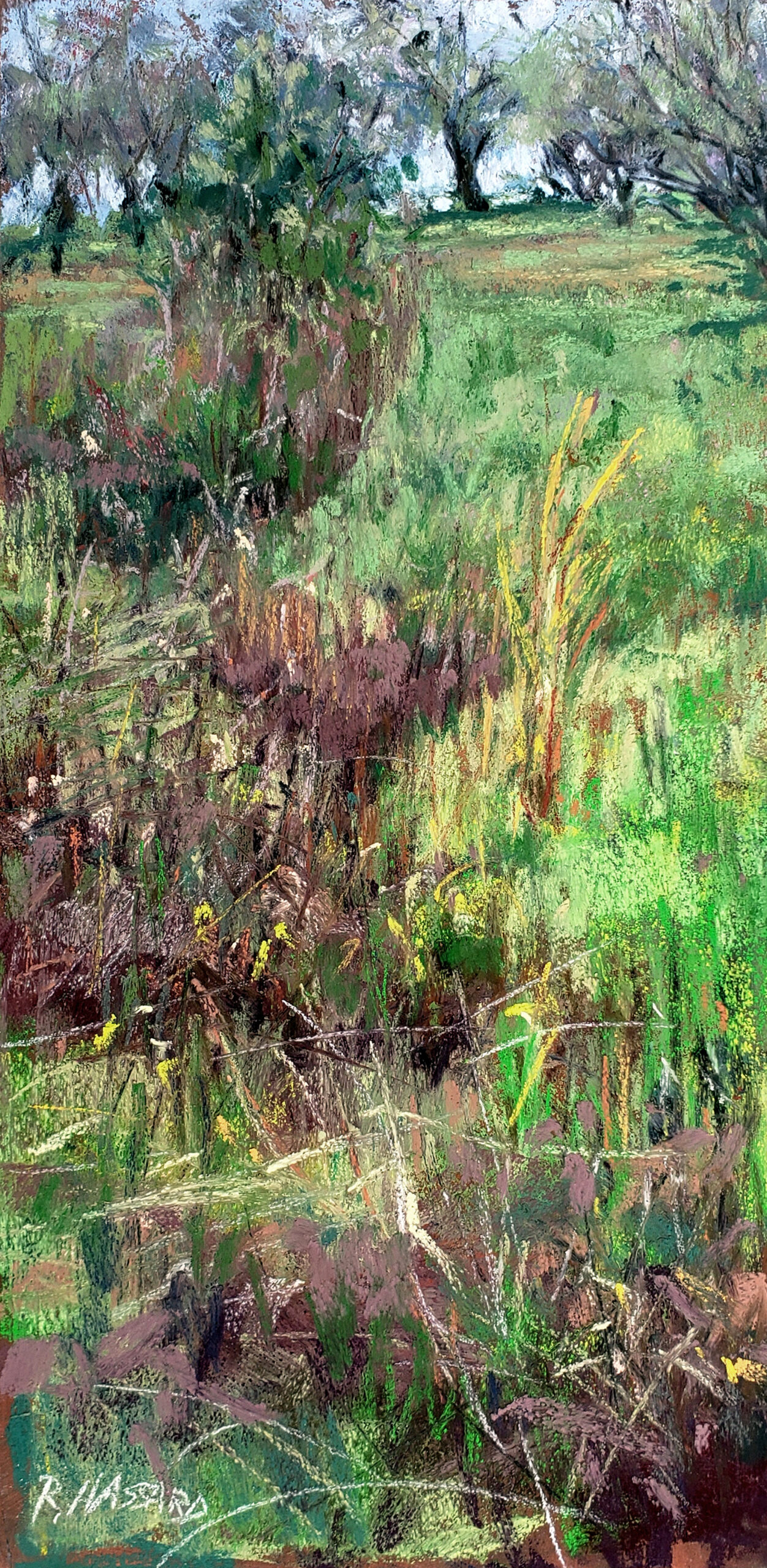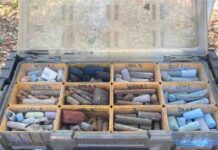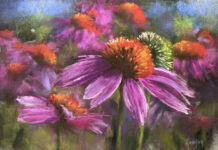I love the tactile qualities — the dusty, get-on-your-fingers (and sometimes your face) dirtiness. The ability to draw and paint with no brushes, solvents, or other go-betweens is a big plus for me. I like the idea of an image flowing from my eye down my arm to my hand and then onto the painting surface, almost like a river.

That pastel paintings can be easily changed, corrected, or adjusted during the working process reveals another benefit. Wiping off, smearing, lifting with a bristle brush, even washing with a damp sponge can all be done when major changes are needed. And on a good sanded ground, the ability to layer colors is nearly endless. With careful pressure, the layers can vary from densely opaque — useful for covering an area completely — to a subtle breath of one color over another — used to quietly modify an area.
Painting at a local farm a few years ago, I faced a grassy area with a view of apple trees in bloom. With its ability to make linear marks, layer, vary, wipe out, scribble, smear, and scratch into, pastel was perfect for capturing the grasses, weeds, and dried remnants of the previous summer’s vegetation in Under the Apple Trees.



